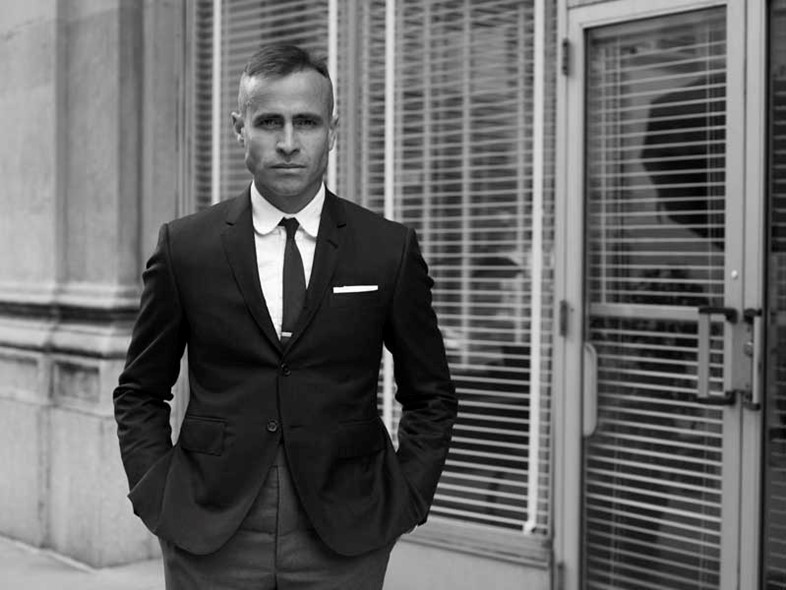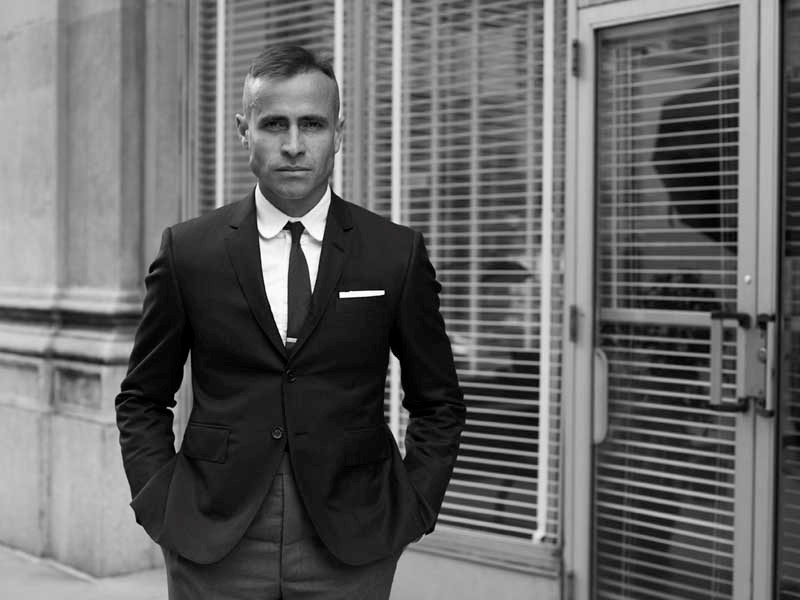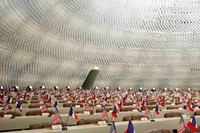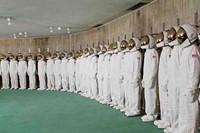With his casual, high-cut suits, Thom Browne has helped revolutionise men's fashion in recent years and his attention to detail even stretches to the locations he chooses to present his collections in. SS11, the first collection of the designer

With his casual, high-cut suits, Thom Browne has helped revolutionise men's fashion in recent years and his attention to detail even stretches to the locations he chooses to present his collections in. S/S11, the first collection of the designer shown in Paris, was unveiled at the retro-futuristic headquarters of the French Communist Party, a building designed by the Brazilian architect Oscar Niemeyer in the early 1970s. Browne’s signature suits — this time with a summery feel, featuring shorts and the occasional Madras check — became actors in a performance, emerging from white spacesuits and promenading through the stark interiors of this building in the 19th arrondissement.
You seem to have a special relationship with the spaces you choose to show your collections in?
The locations are really important for me. Sometimes they even influence how the collection develops. Especially with the S/S11 — I saw the Communist Party headquarters in Paris and redesigned the whole collection, because I really wanted it to work in that particular space. I want to provide an inclusive experience with my shows, not just a collection shown in a nondescript or beautiful space. This was my first show in Paris and I wanted it to be memorable and important, but also very personal. Another reason I chose this space was to be in keeping with what people think of me — being mid-20th century, 1960s and '70s, so not going for a beautiful 18th century building.
You are widely credited with reviving the suit as an American way of dressing. Do you feel that men have become a bit more chic again since you started designing?
I don’t think of it as an American thing in particular. The whole world has become quite homogenised and I don’t see dress as something regional these days. I wanted to bring back a sensibility for what used to be the establishment uniform, before jeans and T-shirts turned it upside down. But also to do something that I like myself and bring suits to an audience that was running away from them. In the late 1950s and '60s there wasn’t much of a choice for menswear, but everyone looked pretty good.
And now also womenswear?
It’s a good challenge for me right now to start designing womenswear too. It comes from the same place as my menswear, with a focus on tailoring, but is interpreted to fit a girl. I can do with this what I always wanted to do, what I think is interesting for people and you never know, something really good might come out of it. It’s still very small, but I am happy with the response.



